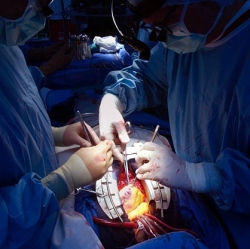
Walt wasn’t in California, as he thought. He was 2,700 miles east, in Philadelphia, where he’d come to be a guinea pig in a test of a new kind of cancer treatment. Leukemia had invaded his bone marrow and spread like a stain through his lymph nodes; the traditional options, including chemo and radiation, had failed. He was 58, and his body groaned with tumors potentially weighing as much as seven pounds. Walt needed something radically different if he was going to live. And the treatment he’d been given a few days ago was certainly that.
Over the past several years, a couple of hundred mice had received it, but Walt was only the seventh adult human. (Six men had preceded him, as well as a six-year-old girl.) The treatment wasn’t a chemo drug, and it wasn’t a vaccine. Instead, doctors at the University of Pennsylvania had tried to make Walt’s own body the drug. In an approach known as gene therapy, they’d taken his own immune cells, modified them to give them new powers, and injected them back into his blood.
Gene therapy represents a break from the medical past. Like open-heart surgery, antibiotics and low-cost medical imaging, it’s a “disruptive” technology capable of changing the way doctors do business. It could transform how we treat many types of cancers in people of all ages—if it can be made to work. But that’s the problem. Before this trial at Penn—a Phase 1 trial, the earliest possible human test of a new treatment—gene therapy had scarcely worked in cancer, anywhere in the world. A typical gene-therapy experiment in cancer was as exciting as a sip of warm tea. Nothing happened, good or bad. In other kinds of gene-therapy trials, there had been tragedies: At Penn in 1999, in a trial run by doctors unrelated to the team treating Walt, a teenager with an inherited liver disease had died after a gene-therapy infusion sparked a runaway reaction.
But Walt’s doctors had done things differently than past scientists. Their approach was original and new. And, incredibly, they’d already succeeded in making tumors vanish in a few of the patients who’d come before Walt. Using their custom technology, the Penn physicians had jolted two cancer-riddled men into sudden apparent remission—an outcome dramatic enough to earn mentions on TV news and a write-up in the New York Times. In September 2011, the paper described Penn’s work as “a turning point in the long struggle to develop effective gene therapies against cancer.”
